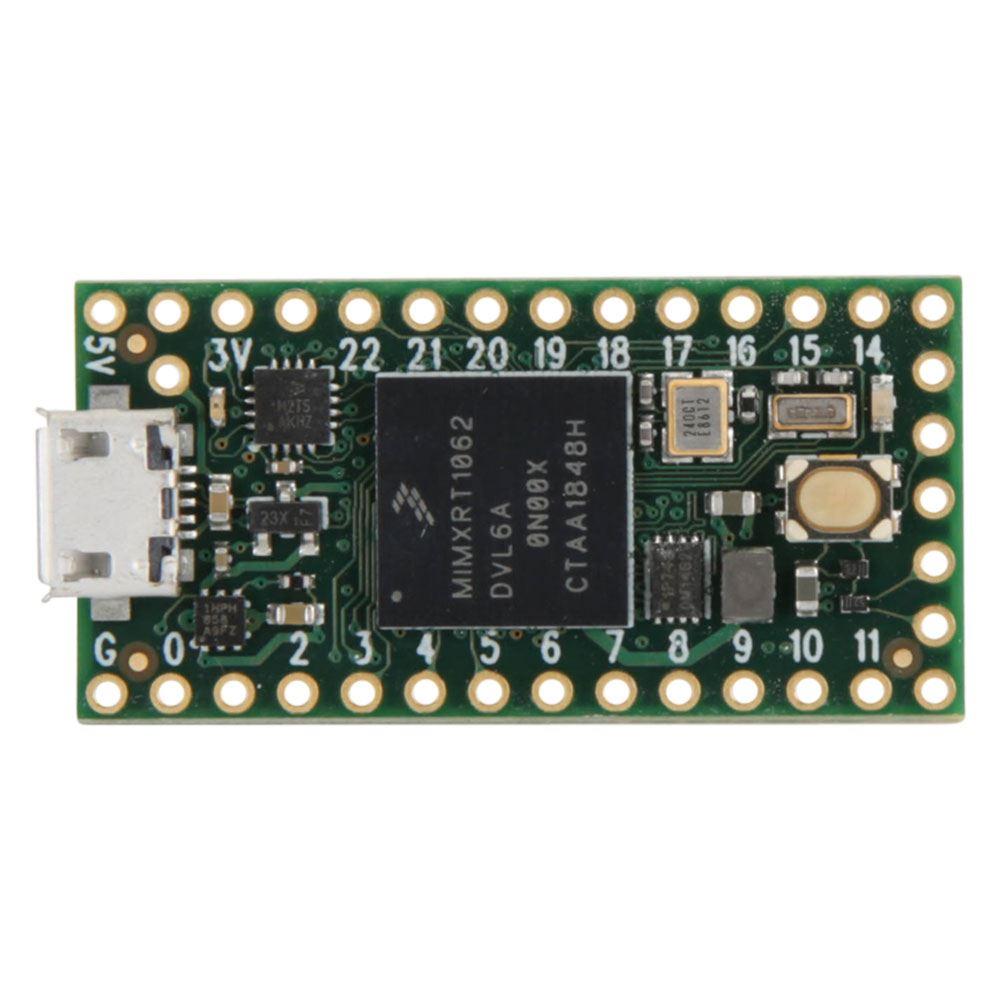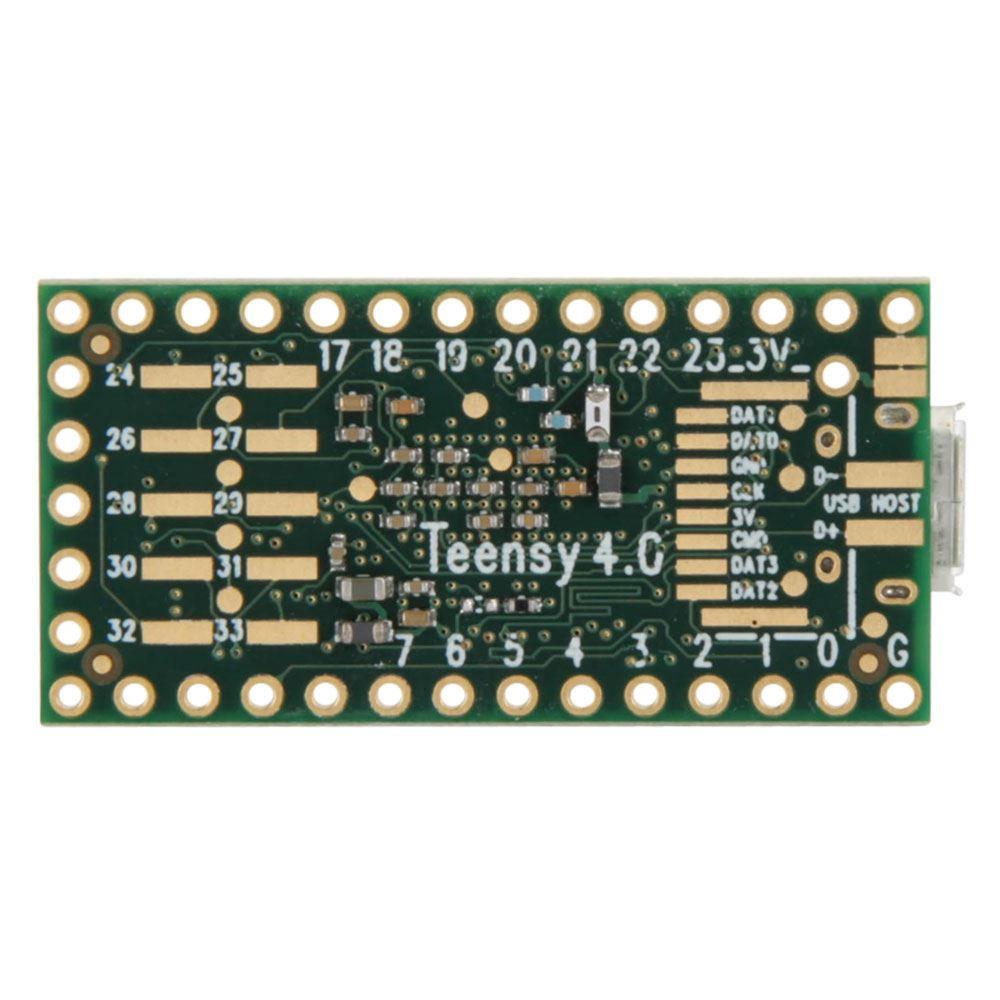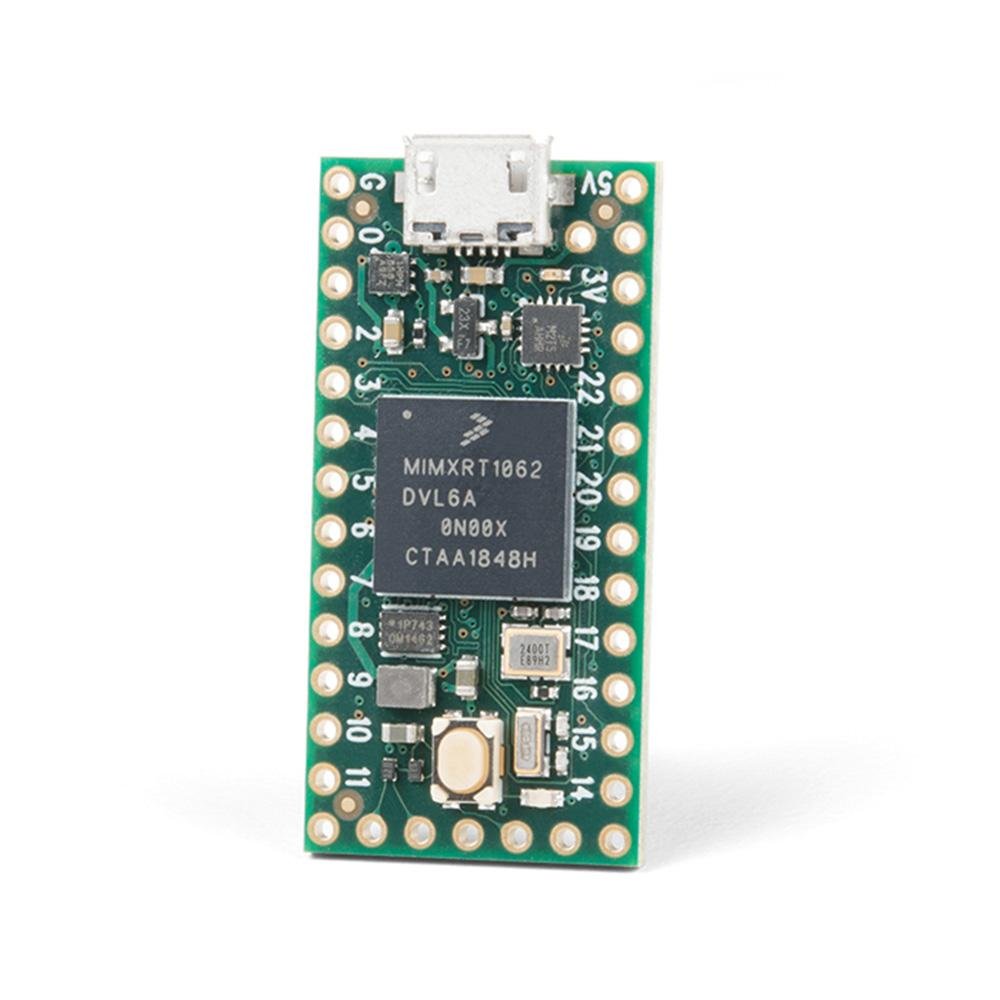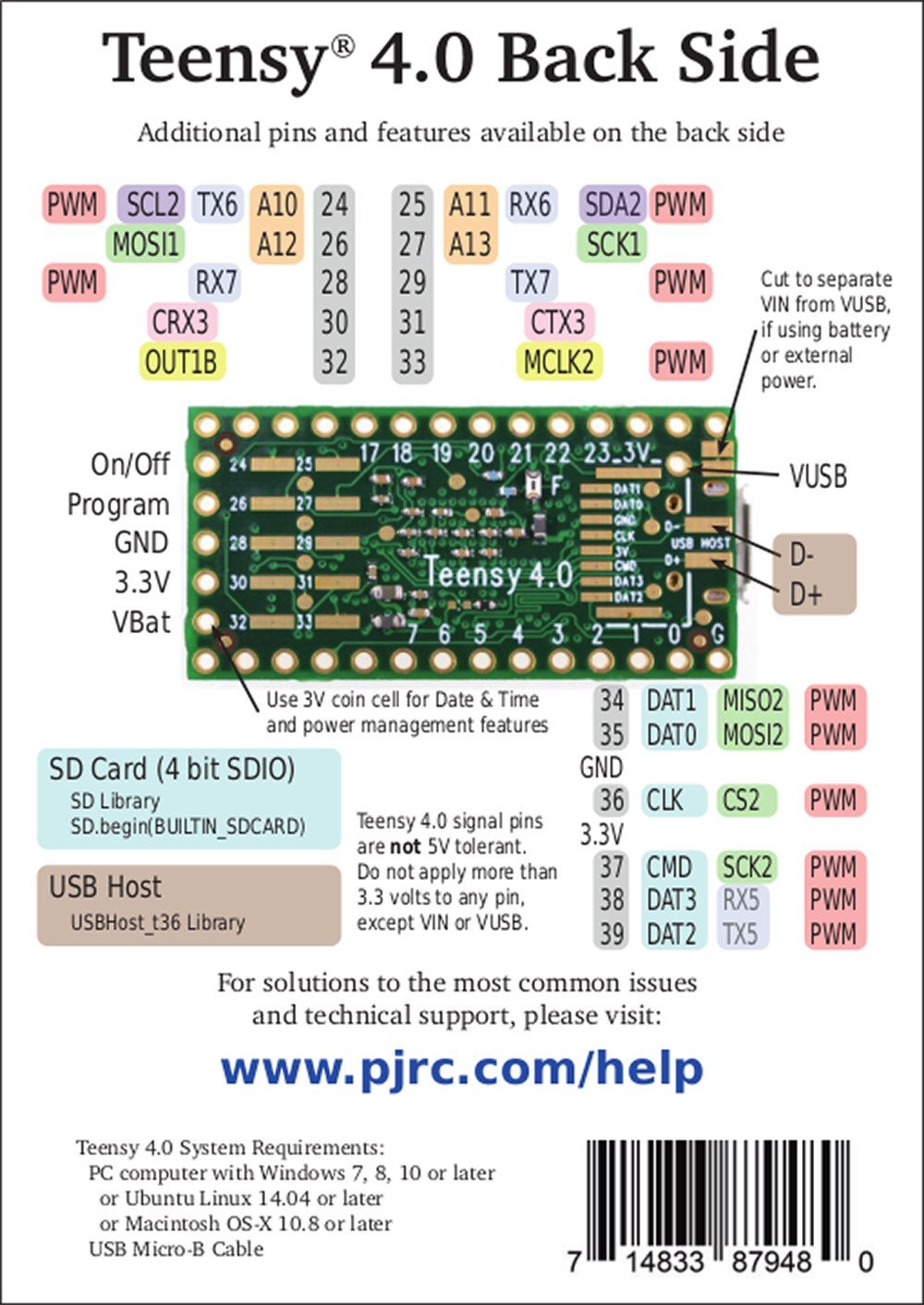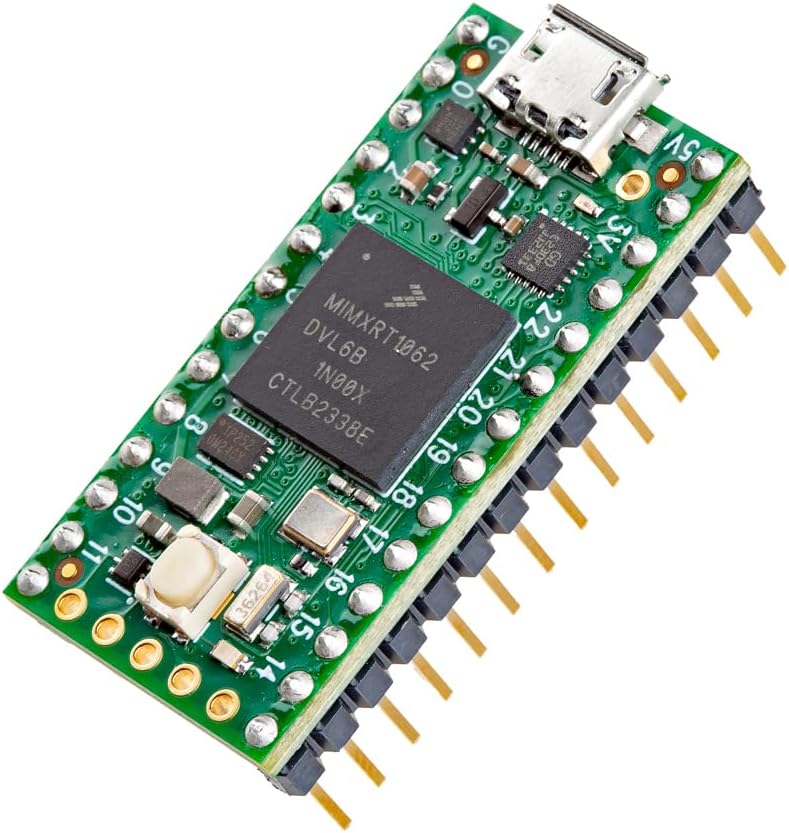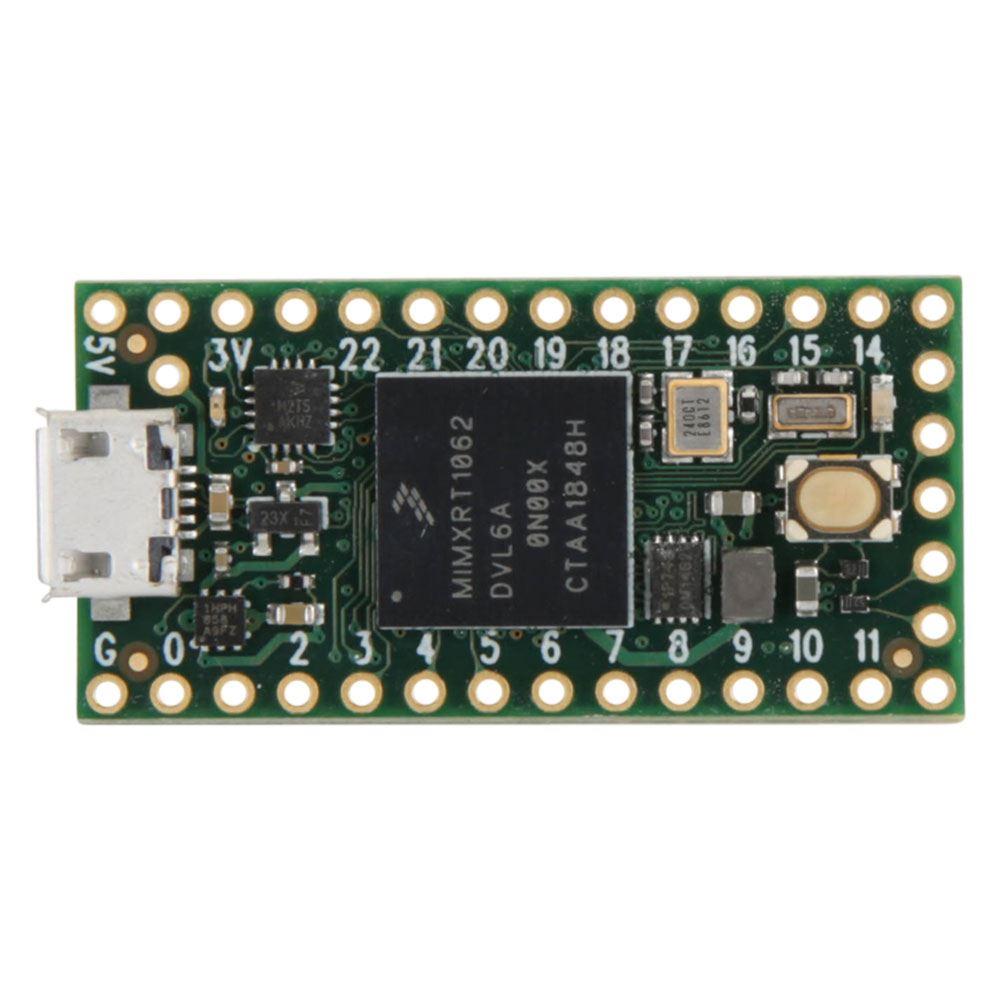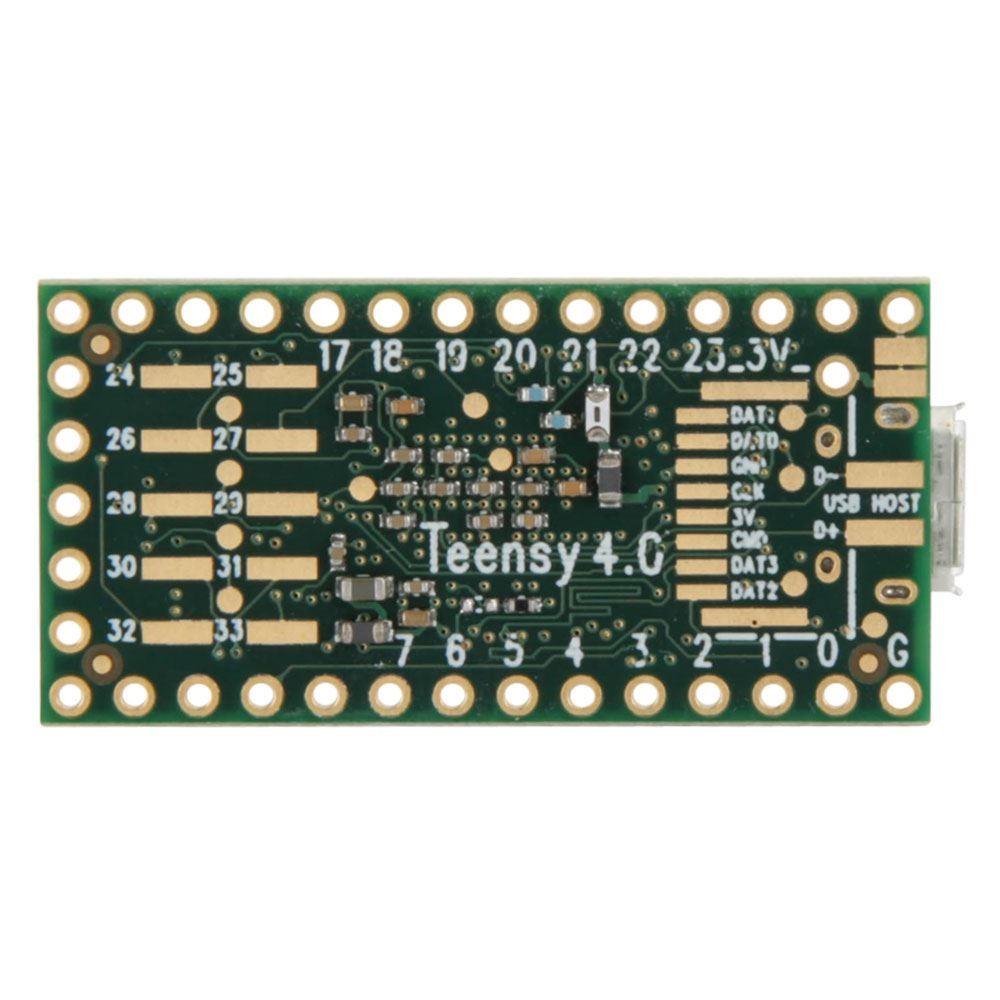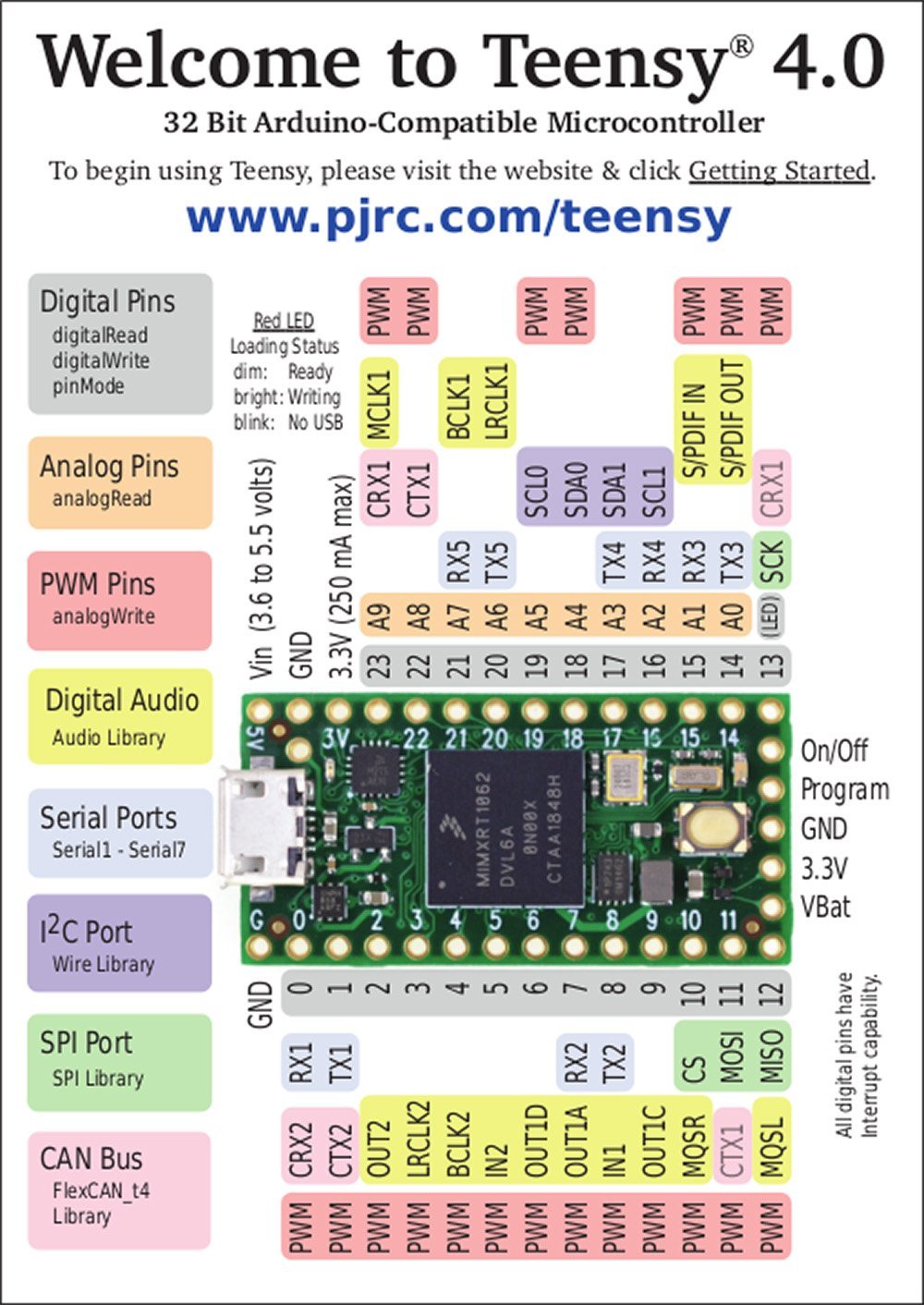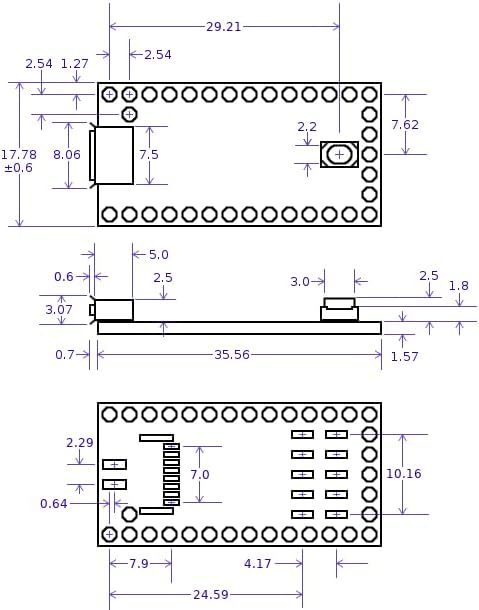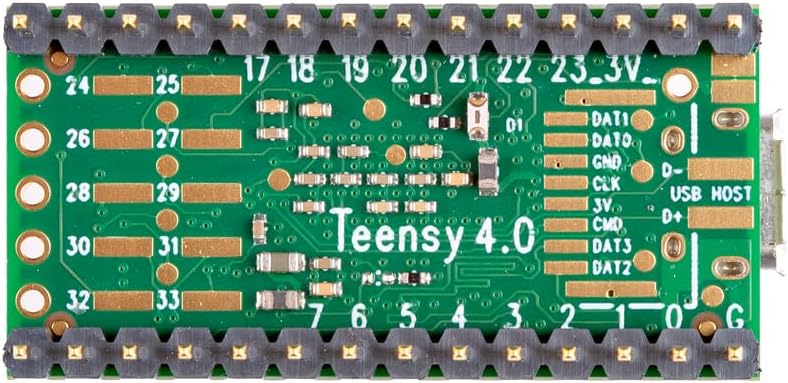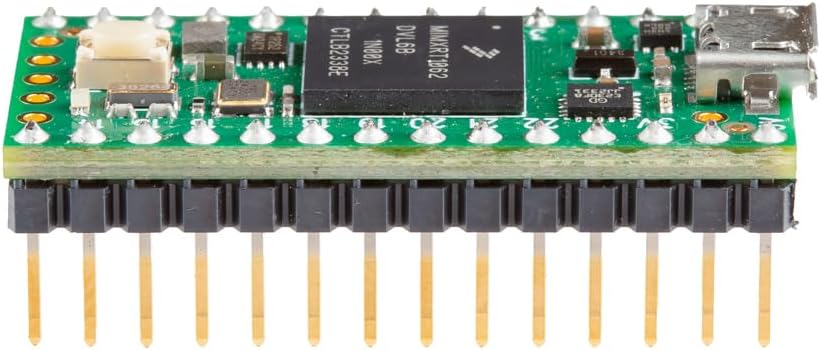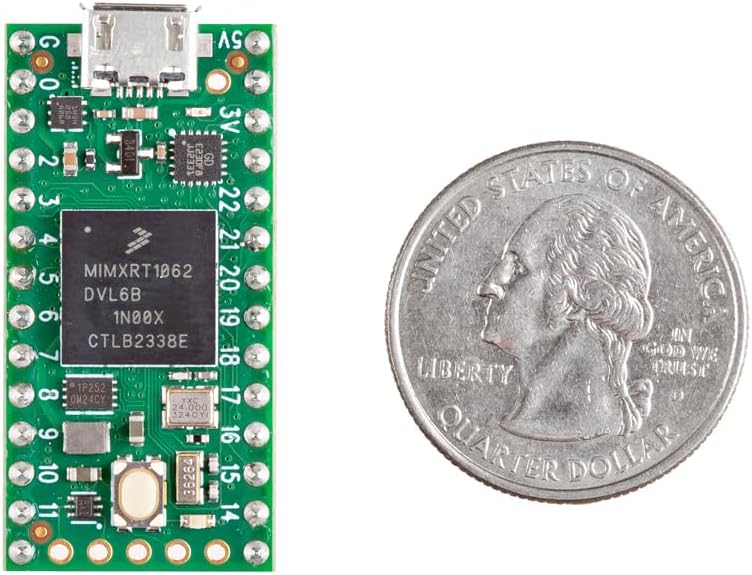PJRC Teensy 4.0 Microcontroller Development Board (Standard & Lockable Versions)
PJRC Teensy 4.0 Microcontroller Development Board (Standard & Lockable Versions)
Couldn't load pickup availability
The Teensy 4.0 is one of the fastest microcontrollers available, featuring a powerful 600 MHz ARM Cortex-M7 processor in the familiar Teensy footprint. This raw processing power is supported by 1MB (1,024K) of RAM and 2MB (2,048K) of Flash memory (with 64K reserved for EEPROM emulation), offering performance that rivals many microcomputers.
The Teensy 4.0 is a direct upgrade in processing power, maintaining the same size, shape (1.4 x 0.7 inches), and breadboard-friendly layout as the Teensy 3.2. It also retains compatibility with most of the pin functions, making it a powerful drop-in replacement for your most demanding projects.

The Power of the Cortex-M7 Core
At the heart of the Teensy 4.0 is the NXP MIMXRT1062DVL6B, a chip that establishes the "Crossover MCU" category. This processor is engineered to bridge the gap between low-cost, real-time microcontrollers and high-performance application processors. NXP packed the high-speed 600 MHz Cortex-M7 core into a compact 144-pin package, allowing the Teensy 4.0 to deliver all the power you'll need in a tiny footprint. It combines this speed with an architecture capable of extremely low-latency, real-time responses, and a rich set of high-speed peripherals.
- Dual-Issue Superscalar Processor: The M7 isn't just fast; it's efficient. It can execute two instructions per clock cycle at 600 MHz. Benchmarks show C++ code compiled by Arduino can achieve this dual-instruction execution 40-50% of the time, dramatically accelerating numerically intensive work.
- Branch Prediction: This is the first ARM microcontroller to use branch prediction. Where other microcontrollers (like the M4) waste three clock cycles on loops, the M7's branch predictor learns the loop and removes that overhead, allowing the branch instruction to run in a single clock cycle.
- Hardware FPU: The built-in Floating Point Unit (FPU) crushes math operations. Unlike many microcontrollers that only accelerate 32-bit floats, the Teensy 4.0's FPU provides full hardware acceleration for both 64-bit "double" and 32-bit "float" types. Complex functions like log(), sin(), and cos() are executed at full hardware speed, not through slow software emulation.
Advanced Memory Architecture
To keep the 600 MHz CPU fed with data, the Teensy 4.0 utilizes Tightly Coupled Memory (TCM). This special feature allows the Cortex-M7 to use 512K of its 1024K total RAM as incredibly fast, single-cycle access memory via a pair of dual 64/32-bit high-speed buses (one for instructions, one for data).
The Teensyduino environment automatically allocates your sketch code into this blazing-fast memory. This high-speed access is separate from the main AXI bus, allowing powerful DMA-based peripherals to access other memory with excellent efficiency, thereby minimizing I/O bottlenecks.
Smart Power Management & Flexibility
The Teensy 4.0 is a powerful yet efficient microcontroller, consuming approximately 100mA when running at 600 MHz.
- Dynamic Clock Scaling: You are not locked into one speed. The Teensy 4.0 provides full support for dynamic clock scaling. Unlike traditional microcontrollers, changing the CPU speed on the fly will not break your serial baud rates, audio streaming sample rates, or Arduino timing functions like delay() and millis().
- Power On/Off: For low-power or battery-operated projects, a dedicated On/Off pin allows you to completely disable the 3.3V power supply. Simply connect a pushbutton and hold it for five seconds to power down. A brief press turns it back on.
-
RTC Support: If a coin cell is connected to the VBAT pin, the Teensy 4.0’s Real-Time Clock (RTC) will continue to keep track of date and time even when the main power is off.
Overclocking: For those who push the limits, the Teensy 4.0 is also capable of being overclocked well beyond 600 MHz!
With its combination of raw speed, advanced architecture, and intelligent power features, the Teensy 4.0 provides a level of performance previously unattainable in the microcontroller world, opening up entirely new possibilities for complex and demanding projects.
The Teensy 4.0 is available in the standard unlocked version, and in a lockable version suitable for commercial products and secure applications to protect your program code from unauthorized access and coping. Click Here for Code Security for Lockable Teensy details.
Teensy 4.0 Technical Specifications:
- ARM Cortex-M7 at 600 MHz
- 1024K RAM (512K is tightly coupled)
- 2048K Flash (64K reserved for recovery & EEPROM emulation)
- 2 USB ports, both 480 MBit/sec
- 3 CAN Bus (1 with CAN FD)
- 2 I2S Digital Audio
- 1 S/PDIF Digital Audio
- 1 SDIO (4 bit) native SD
- 3 SPI, all with 16 word FIFO
- 3 I2C, all with 4 byte FIFO
- 7 Serial, all with 4 byte FIFO
- 32 general-purpose DMA channels
- 31 PWM pins
- 40 digital pins, all interrupt capable
- 14 analog pins, 2 ADCs on chip
- Cryptographic Acceleration
- Random Number Generator
- RTC for date/time
- Programmable FlexIO
- Pixel Processing Pipeline
- Peripheral cross triggering
- Power On/Off management
Teensy 4.0 Documentation
|
|
|
|
|
|
|
|
Additional Teensy Resources:
Audio Adapter Shield for Teensy 4.0 Rev D
Teensyduino Software Add-on for Arduino IDE
Envistia Mall is an authorized PJRC & SparkFun Teensy distributor.
Share
